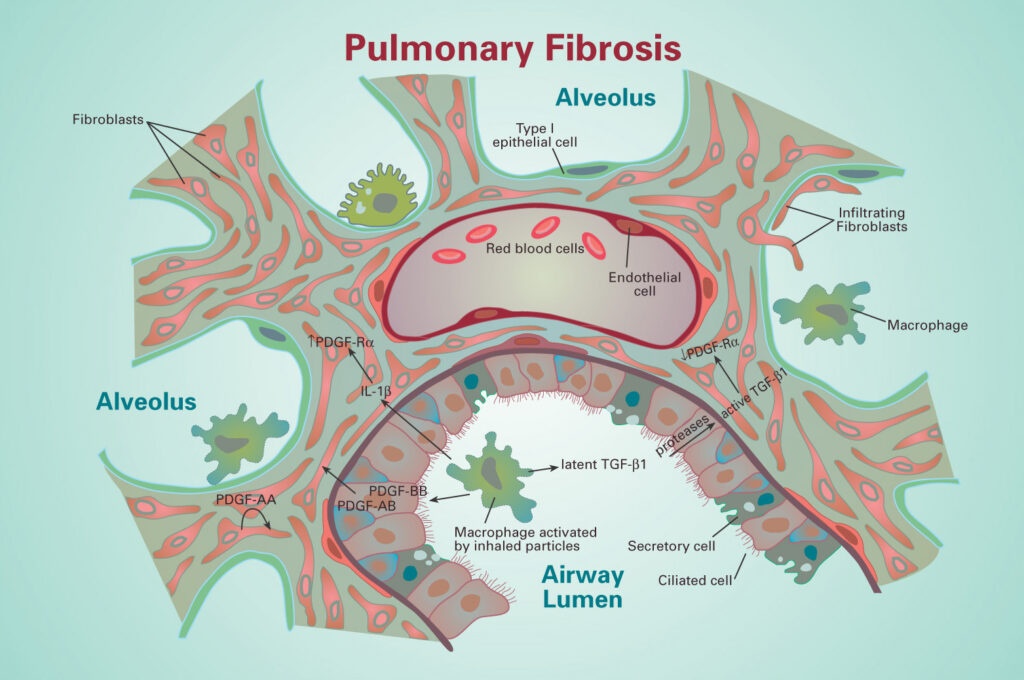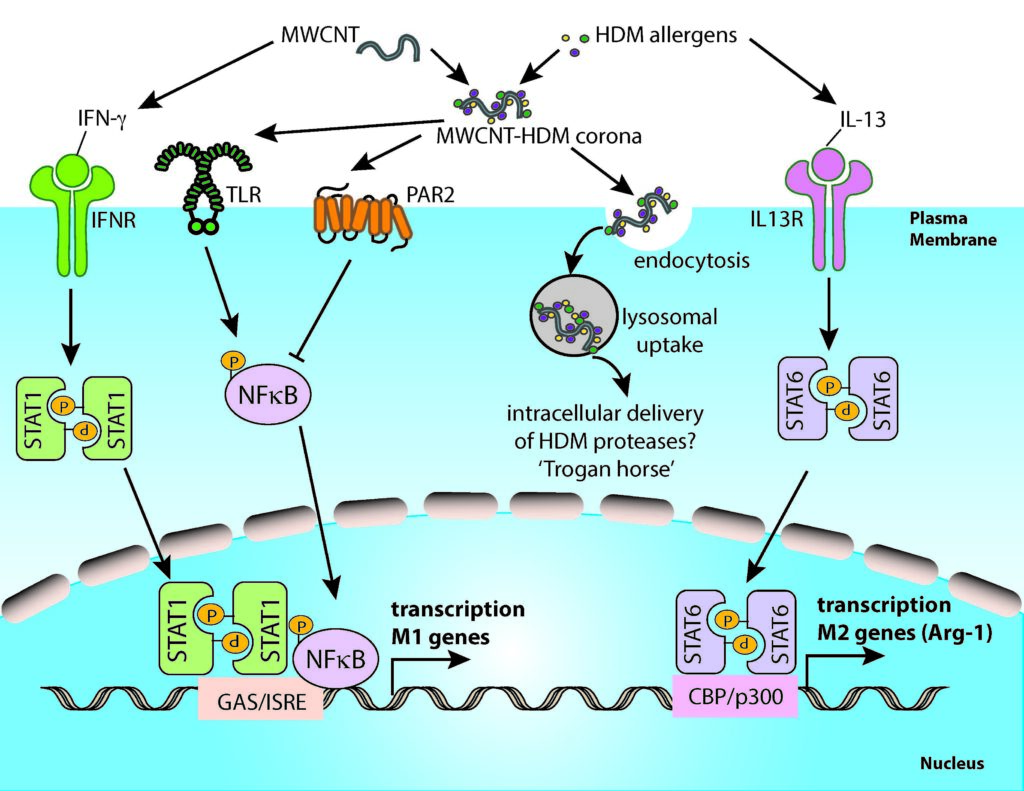 Immunotoxicology of Inhaled Nanoparticles
Immunotoxicology of Inhaled Nanoparticles
Research in the Bonner lab utilizes a combination of in vitro cell culture models and mouse models to study the toxicology of emerging nanoparticles. Current efforts are aimed at investigating: 1) Mechanisms through which carbon nanotubes and nanometals cause pulmonary fibrosis, 2) Effects of nanoparticles on pre-existing respiratory diseases, including allergen-induced airway inflammation in mice to study nanoparticle exacerbation of asthma, 3) Effects of carbon nanotubes and nanometals on the pathogenesis of pleural diseases, including mesothelioma and subpleural fibrosis, and 4) Consequences of carbon nanotube functionalization by atomic layer deposition on toxicity and innate immune responses in the lung and other organ systems.

Mechanisms of pulmonary fibrosis
Inhaled nanoparticles are capable of reaching the distal regions of the lung and beyond the barriers of the lung to reach the surrounding pleural region and enter the lymphatic system, where they may translocate to distant organ systems to cause toxicity. Much of our research has been focused on understanding how nanoparticles caused fibrosis; tissue scarring defined by the progressive accumulation of myofibroblasts and collagen deposition.
Asthma Exacerbation and Modulation of Innate Immunity by Nanoparticles
Toxic engineered nanoparticles will likely pose the greatest threat to susceptible individuals with pre-existing respiratory disease. Efforts are aimed at determining how certain nanoparticles exacerbate allergen-induced allergic airway disease. Studies on the interplay between allergens (e.g., house dust mite) and nanoparticles will lead to a better understanding of the human health risks to nanoparticles in individuals with asthma. For example, as shown in the illustration below, multi-walled carbon nanotubes (MWCNT) interact with house dust mite (HDM) allergens to facilitate interaction with cell-surface receptors such as TLR4 and PAR2 to activate members of the STAT family of transcription factors. This hypothetical mechanisms is proposed to mediate the enhanced immune responses of macrophages and epithelial cells, which contribute to the exacerbation of allergic asthma by nanoparticles.
Nanoparticles and Pleural Diseases
A major issue to be resolved with carbon nanotubes is whether or not they cause mesothelioma, a rare cancer that is linked to asbestos exposure. The fiber-like shape of carbon nanotubes resemble tiny asbestos fibers and, like asbestos fibers, nanotubes inhaled by mice migrate to the pleural regions and remain there for months. Current efforts are aimed at determining whether carbon nanotubes cause mesothelioma in susceptible transgenic mouse models deficient in key protective transcription factors; p53 and STAT1. Our work also addresses the functional significance of soluble growth factors and chemokines, as well as cell-cell interactions, that will lead to a better understanding of the pathogenesis of pleural disease.



